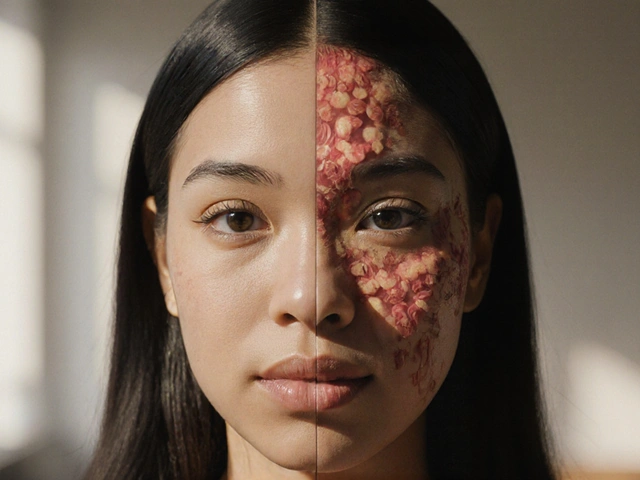DHT Blockers: What They Do and When to Use Them
Want to slow hair loss or manage enlarged prostate symptoms? DHT blockers are a common route. DHT (dihydrotestosterone) is a male hormone that can shrink hair follicles and drive prostate growth. Blocking DHT often helps stop shrinking follicles and can improve hair thickness or ease urinary symptoms. This page will help you understand the main options, how they work, and basic safety tips so you can talk to your doctor with confidence.
How DHT Blockers Work
Most DHT blockers target the enzyme 5-alpha reductase, which turns testosterone into DHT. Prescription drugs like finasteride and dutasteride reduce DHT levels strongly and are proven to slow hair loss and shrink an enlarged prostate for many people. Topical options and shampoos with ketoconazole can lower scalp DHT locally. Natural supplements such as saw palmetto and pumpkin seed oil have milder effects and mixed evidence, but some people notice benefits with fewer side effects.
Think of it this way: lowering DHT can stop further damage to hair follicles and, in some cases, let weakened follicles recover. For prostate symptoms, reduced DHT often means less prostate volume and easier urination. Results usually take months — don’t expect overnight change.
Choosing and Using DHT Blockers Safely
Start by checking what you want to treat. For male pattern hair loss, finasteride (1 mg daily) is a common prescription. Dutasteride is stronger but used less often for hair due to side effect concerns. For prostate issues, higher doses are used under medical care. If you prefer over-the-counter or natural choices, look at saw palmetto, zinc, pumpkin seed oil, or ketoconazole shampoo — they’re gentler but less predictable.
Side effects matter. Prescription DHT blockers can affect libido, erectile function, and mood in some users. Rarely, sexual side effects persist after stopping the drug. Dutasteride may have stronger risks than finasteride. Natural products tend to cause fewer sexual side effects but can still interact with other meds.
Simple safety steps: talk to your doctor before starting anything, especially if you take other medications or have prostate or liver issues. If you’re a man over 40, mention prostate screening and PSA tests — some DHT blockers change PSA levels and can mask issues. If you notice mood changes, new sexual symptoms, or abnormal breast changes, stop the product and check with your doctor.
Practical tip: give any DHT blocker at least 3–6 months to show effects for hair, and 6–12 months for clearer prostate symptom relief. Combine treatments carefully — some people use a topical minoxidil plus an oral DHT blocker for better hair results. Keep records: photos, symptom notes, and any side effects help guide adjustments.
If you want links to specific articles, product reviews, or safety guides on our site, use the DHT blockers tag feed to explore related posts and reviews. Ask your clinician about what fits your health goals and lifestyle — and don’t ignore follow-up checks once you start treatment.

Propecia Alternatives: 10 Ways to Fight Hair Loss Without Prescription Pills
Exploring Propecia alternatives? This article breaks down 10 different options, from natural DHT blockers to modern treatments, so you can see what might work for your hair loss journey. We cover the pros, cons, and what to expect from each method, keeping it clear and real. You'll find honest takes, practical advice, and comparisons based on today’s science—not wishful thinking. Make a confident choice about your next steps without the medical jargon.
Categories
- Medications (50)
- Health and Medicine (46)
- Health and Wellness (34)
- Online Pharmacy Guides (15)
- Nutrition and Supplements (7)
- Parenting and Family (3)
- Environment and Conservation (2)
- healthcare (2)
- prescription savings (1)
Popular Articles



